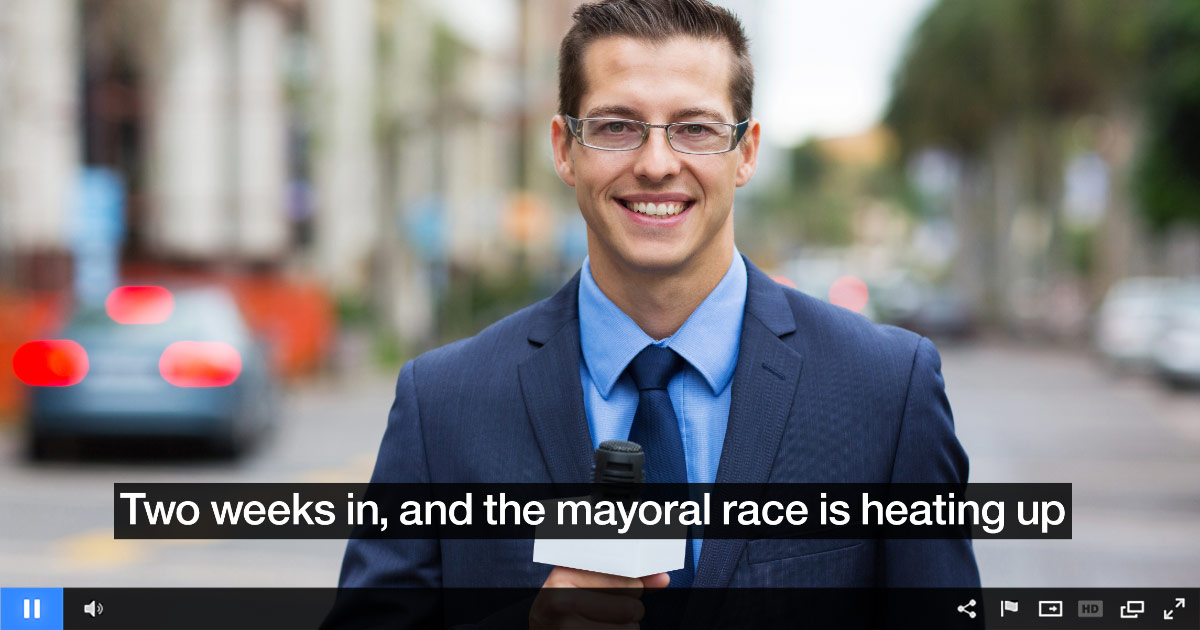
With the news moving at lightning speeds, consumers are more tuned into current events than ever while media companies are challenged to keep pace. Broadcast networks are under intense pressure to respond quickly to breaking news, world events, and sporting games in order to satisfy consumer demand for instant, quality digital experiences.
However, delivering accurate captions for live broadcast is both time and resource intensive for broadcast networks, given that production teams must manually transcribe live programming in real-time – which often leads to delayed or incorrect captions. To solve these challenges, IBM launched Watson Captioning – a flexible, scalable, closed captioning software solution that leverages AI to automate the captioning process and uses machine learning to improve accuracy over time. As outlined in this white paper, Captioning Goes Cognitive: A New Approach to an Old Challenge, Watson is bringing greater context to video assets while removing some of the challenge associated with closed captioning.
Through its Live Captioning functionality, Watson Captioning empowers closed captions for broadcast networks, unlocking value from live video content and optimizing the viewer experience. By accurately captioning live video content, broadcasters can provide premium experiences for local viewers, increase accessibility for the hearing-impaired community, and adhere to compliance standards.
Mount Rushmore? Yes. Mount Veniaminof? Not so much.
The Tappan Zee Bridge. Newark, NJ (pronounced new-work) versus Newark, DE (pronounced New Ark). Mets pitcher Noah Syndergaard. These icons might be household names for New Yorkers, but they’re not so easy to spell. And what about important local landmarks that may lack national significance?
For local broadcast, it can be especially burdensome for production teams to provide accurate captions in real-time, given that each region has its own local celebrities, politicians, sports teams, schools, mascots, and vernacular. Through its market-specific training, Watson Captioning is equipped to recognize local landmarks, draw geographic context, and even register a broadcaster’s accent, resulting in more precise captioning for local TV news. By training its AI system to process and learn specific content, Watson Captioning ensures a relevant experience for local viewers in any region.
Accurate closed captions for all
From nightly news to sporting events, live content is a significant portion of viewers’ media consumption. However, the turnaround time for captioning breaking news for broadcast networks is extensive, which means that live programming is frequently broadcast without captions. Or, because production teams are rushing to manually transcribe the content in real-time, captions are often riddled with errors, leading to unfortunate situations like when a local Austin TV station accidentally referred to a bombing victim as “this monkey.” As a result, viewers who rely on closed captioning to watch video are forced to endure either an incomplete or incorrect viewing experience.
By automating the time-intensive manual process, Watson Captioning empowers production teams to not only deliver live captions in real-time, but also guarantees a high standard of precision that becomes more accurate over time. In doing so, live news and video content becomes more accessible to the hearing-impaired community.
Conquering compliance for captioning
Broadcast networks and content providers are required to meet various compliance regulations that demand high-quality captioning for live broadcast. To meet these standards, broadcasters must pay attention to everything from spelling to punctuation to vulgar language to how different regions interpret all of the above. In a fast-paced world of breaking news, cyclone bombs, and celebrity snafus, broadcasters need to rapidly provide accurate captions that are also in keeping with local standards and regulations.
Watson Captioning’s ability to automate a once time and resource-intensive process, frees up production teams to focus on adhering to various, relevant compliance standards. And, as Watson Captioning learns overtime, it will pick up on the nuances of each local market and region. This means broadcasters have tools that aid them in navigating the global compliance landscape.
Summary
For broadcast networks, providing accurate, live closed captions at scale is difficult, especially when the news moves a mile a minute. With Watson Captioning’s Live Captioning functionality, broadcasters can better comply with regulation standards, while producing premium viewing experiences for both the local and hearing-impaired communities.
Learn more about Watson Captioning AI solutions and how it can aid in the development of closed captions for broadcast networks.